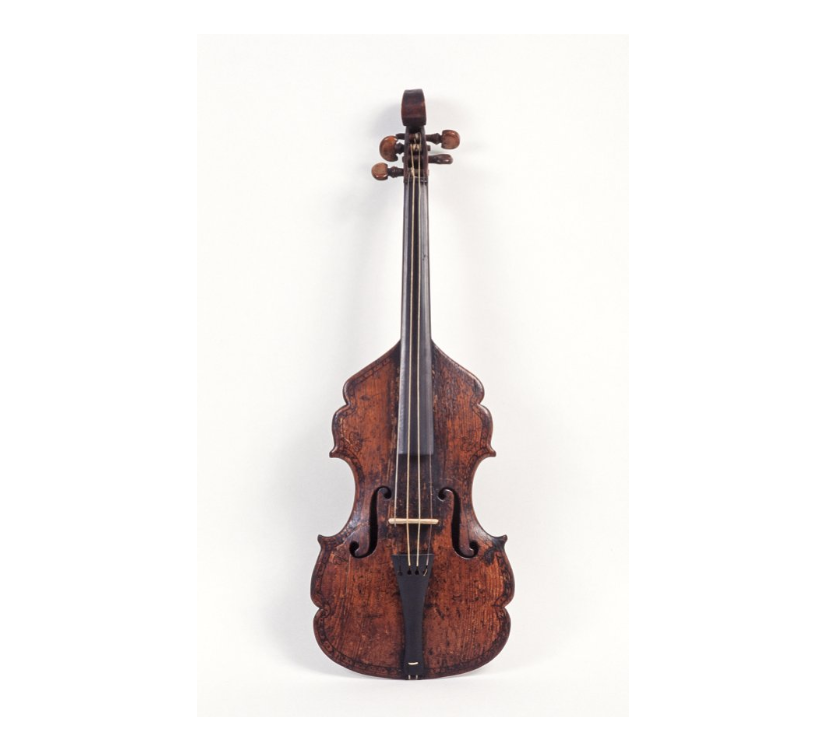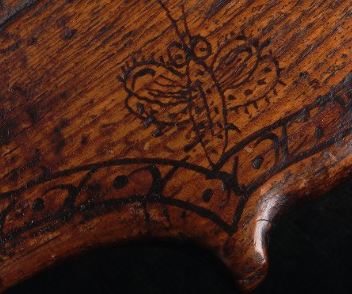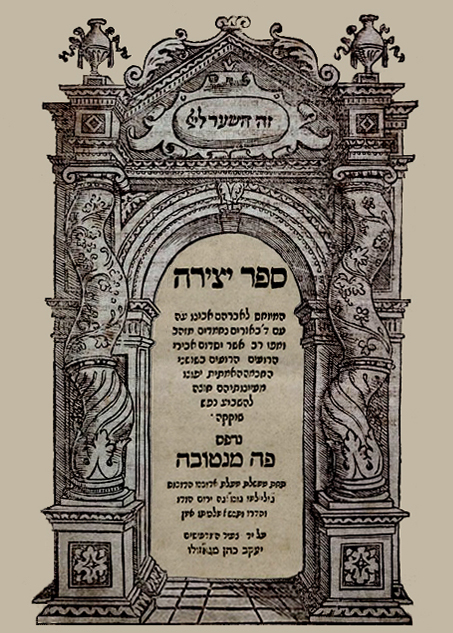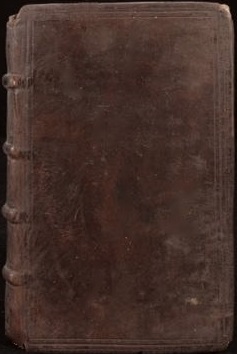To download a copy of this academic paper in pdf format, please click here: PAPER – New Research into the Bassano Instruments
Various researchers have written about the life, music, and some have detailed a few of the various instruments manufactured by the Bassano family of master craftsmen, but none have delved into what the real meaning behind their markings on the instruments really are.
In my latest major academic work of ‘Genesis of the Shakespearean Works’ I proved that the wider Bassano family were Rabbis and Jewish Master Kabbalists who were responsible for the printing of the Zohar of Mantua in 1557 and the expounded version of 1558-60, and the Bassano family of England taught Kabbalah amongst the English. Furthermore, I proved that many of the Shakespearean plays were penned and performed on London streets long before William Shakespeare was born, and all of those plays were embellished with Hebrew piyyut (embellished poetry used as poetic song in worship on Sabbaths and festivals),[1] Jewish (particularly Essene) theology, and Kabbalistic lore from the Sefer Yetzirah, the Babylonian Talmud, and the first Zohar of Mantua. In fact, a play written as a book by Hieronymus Bassano as a “comedy written in the vernacular of free will”, which was banned by the Catholic Church is likely to be the earliest version of ‘As You Like It’ – a Hebrew phrase of the ‘appointed time’ from Ecclesiastes 3:1-8 and Daniel 7:25 in relation to the festive season, where one has the freedom to do what you like (free will). All of Hieronymus de Bassanus’ (Jeronimo Bassano) Jewish books of plays, remedies, and Kabbalah were banned under the Index Librorum Prohibitorum of 1559.
The Bassano family used their plays, books, music and instruments to teach the English people the ancient Jewish philosophy of Kabbalah. However, they clearly opposed the masonic philosophy no different to Rabbi Solomon Bar Isaac (1040-1105) (Rashi), who in his prophetic piyut (poem) Selikhot attacked the Templar Knights as sun worshippers. In 2 Henry IV penned prior to 1576 while Shakespeare was just a boy, the Bassano’s referred to Masonry as a seductress (Lilith, Succubus) who would thrust the Entered Apprentice into substantial moral decline. This understanding is necessary as we investigate the Bassano’s markings, because they were Master Kabbalists, far beyond the understanding of most scholars today. They were not Pharisees, nor Sadducees, but Jewish Essenes, who taught from some of the earliest scrolls that were otherwise out of print during that era.
For example, Emilia Bassano taught the Essenes hive principle – a natural order in the Kingdom where people live in harmony, and are blessed by the Angel of Work. This results in the sweetest honey flowing in abundance to all. Emilia Bassano used an imagery in Salve Deus Rex Judæorum of lips like scarlet threads, sweeter than the sweetest honey dropping dew…where all the Bees do meet:
His lips like skarlet threeds, yet much more sweet
Than is the sweetest hony dropping dew,
Or hony combes, where all the Bees do meet.[2]
The ‘sweetest honey dropping dew’ is a specific reference to the festival of Sukkot with symbolic droplets of honey in hope for a good year, referenced from Exodus 3:8 of a ‘land flowing with milk and honey’, but in this context, it also means the blessing given in abundance to the Jewish Essenes (Bees) by the Angel of Work. The Bassano’s earliest 1541 coat of arms exhibits three drone-like honeybees above the Tree of Life. In Kabbalah, this represents the ten sefirots in unity, commonly call Da’at (דעת in the Hebrew), referring to a ‘higher knowledge’ of wisdom, literature, understanding or discernment,[3] almost life a deeper reality in the renewal of our minds with a ‘divine spark’ of creation, a creative force in unity with God and His angels.[4] These are the very same Jewish Essene imageries weaved throughout the Shakespearean works. This is but one of thousands of Jewish Essene Kabbalistic imageries found in Emilia’s writings and in the Shakespearean works. We need to understand who they were before we can understand what their markings might have meant.
Markings on Recorders and Lutes
The earliest mark on Hieronymus Bassano’s recorders was identified as “HIE·S”, “HIER S·” and “!!” for ease of recognition in text,[5] but in fact these burn marks into the timber recorders and lutes were not straight. Whilst most scholars have simply identified the marks as a bee or a silkworm moth, I suggest there is far more to it. Below to the left are two tracings of these burn marks under a microscope. They do appear very similar to the glyph on the right.
|
Bassano Recorder Mark, Bassano Lute Mark, Hebrew Letter Vav as a pair (Left to Right). |
The glyph on the right is the sixth letter of the Hebrew alphabet – Vav (וֹ). It is often used syntactically as “and”, hence it is recognized as a connector, channel, or bridge. In English we would use the expression, “you and I” will go, hence it is used a connector between men, but also a connector or bridge between God and man. This is why the first five chapters of Genesis nearly all of the sentences (in the Hebrew text) start with vav.
Jewish Kabbalists recognize vav as one of the four letters of the divine name of God (YHVH) and the ten sefirot of the Tree of Life, as explained by Daniel Matt (author of the Zohar, Pritzker Edition, largely based upon Rabbi Isaac Bassano’s 1558-60 Edition of Mantua):
This is the four-letter name: YHVH. Y symbolizes Hokhmah; H, Binah; V includes six sefirot; the final H, Malkhut. Ein Sof (God) is concealed within Keter, while its light spreads through these four letters, from yod to he, from he to vav, from vav to final he.[6]
The Zohar teaches a dream in relation Genesis 2:10, “A river flowed from the land of Eden, watering the garden and then dividing into four branches” where he is the river, yod expands the river on all sides, and vav is a son conceived beneath her. Keep in mind Y is yod, H is He, V is vav, and again H is He from the name of God – YHVH (Yahweh). He sits to be suckled in a relationship depicted by progression or transformation. The royal crown of the sefirot is Keter, which is described by Matt as follows:
The highest crown, Ketei Elyon, is the royal crown, the skull, inside of which is: yod he vav he, path of emanation, sap of the tree, spreading through its arms and branches—like water drenching a tree, which then flourishes.[7]
In essence, vav written twice as a melody is the sweet holy river of God that is the fountain of our lives; it is the flood of grace, a celestial stream that flows into our lives from the Tree of Life – the name of God (YHVH) – in this case through the Bassano’s own musical instruments. If you don’t believe me, then all you need to do is read the below excerpt from Emilia Bassano’s own 1611 tribute to God in Salve Deus Rex Judaeorum (Hail God, King of the Jews):
Sweet holy riuers, pure celestiall springs,
Proceeding from the fountaine of our life;
Swift sugred currents that saluation brings,
Cleare christall streames, purging all sinne and strife,
Faire floods, where souls do bathe their snow-white wings,
Before they flie to true eter[nall] life:
Sweet Nectar and Ambrosia, food of Saints,
Which, whoso tasteth, neuer after faints.[8]
Markings on Violins
Why is this interesting? Because when we compare the inscriptions found on a 17th century Bassano violin in the Musical Instruments Museums of Edinburgh, it sheds new light on their methodology. In each corner of the soundboard there is a bug, which could be described as a butterfly or silkworm moth, both of which have been used as Bassano family emblems over the centuries.
|
Figure 1 – 17th Century Bassano Violin. Copyright 2018 University of Edinburgh. |
Instead of using the traditional Vav markings on lutes and recorders, the Bassano family used a different marking on their violins. This marking is found all around the edge of the instrument.
|
Figure 2 – Hebrew Marking on Violin. Copyright 2018 University of Edinburgh. |
Again, this marking is actually the Hebrew letter “Bet” meaning ‘the Messiah’, but speaking Kabbalistically it represents the ‘duality of nature present in all of creation’, which is a regularly writing of the Bassano family.
| Figure 3 – Marking on Violin cut under microscope (Left), Hebrew letter Bet written twice (Right). |
Some scholars have suggested that this violin may not be a handcrafted instrument of the Bassano family, but I believe they have not studied the inscriptions well enough to know. Whilst the Bassano family were known for “many strings”, this violin was probably one that was made to order with 4 strings. The fact that it has two Hebrew letters backwards with substantial Kabbalistic meaning, both of which were written by the Bassano family in their literary works, both burnt into the timber exactly the same way as their lutes and recorders is sufficient evidence to prove authenticity.
Speaking Kabbalistically, בּ (Bet) represents the duality of nature present in all of creation. Bet is an expression of male emanation in the Tree of Life – the right side represents the male side of man – the Pillar of Mercy, in this case, the sefira of Hokhmah (Wisdom). In the Zohar, this particular passage refers to the very same passage in Genesis as the one mentioned above for Vav:
In the beginning, God created (Gensis 1:1) – mystery of (Reshit), At the beginning of, your baking, offer a load as a gift (Numbers 15:20). בּ (Bet) is (beita), house of the world – watered by that river entering it, mystery written: A river issues from Eden to water the garden (Genesis 2:1). This river gathers all from the high depth, its waters never ceasing to saturate the garden. That high depth, initial בּ (bet) – letter are sealed inside it by a single narrow path hidden within. Out of that depth emerged two forces, as is written (et ha-shamayim), the heavens, from the depth, a mystery utterly concealed. And the earth – the concealed one generated this earth, but included with heaven emerging together, cleaving side by side.[9]
Allow me to put this into context. To the Jewish Kabbalist, redemption is primarily spiritual, and each one is responsible for ‘mending bad souls’ in the processes of Tikkun Olam and Gilgulim. It is a matter of healing or mending these souls in the current life (Tikkun), or the life thereafter (Gilgulim).[10] It is essentially mending the disharmony in the world and reconnecting the Jews with “the infinite” Ein Sof (God). Thus, the Bassano’s declared the Jewish Kabbalistic doctrine of Tikkin Olam (World Repair) was superior to that of the English Masons.
A very good Spanish example of Tikkun Olam is in Act 3, Scene 1 of Julius Caesar as follows:
I could be well mou’d, if I were as you,
If I could pray to mooue, Prayers would mooue me:
But I am constant as the Northerne Starre,
Of whose true fixt, and resting quality,
There is no fellow in the Firmament.
The Skies are painted with vnnumbred sparkes,
They are all Fire, and euery one doth shine:
But, there’s but one in all doth hold his place.[11]
This speaks of the 16th century Spanish Kabbalistic view of creation and Tikkun Olam, explained rather well by Howard Schwartz:
At the beginning of time, God’s presence filled the universe. When God decided to bring this world into being, to make room for creation, He first drew in His breath, contracting Himself. From that contraction darkness was created. And when God said, “Let there be light” (Gen. 1:3), the light that came into being filled the darkness, and ten holy vessels (sefirot) came forth, each filled with primordial light. In this way God sent forth those ten vessels (sefirot), like a fleet of ships, each carrying its cargo of light. Had they all arrived intact, the world would have been perfect. But the vessels were too fragile to contain such a powerful, divine light. They broke open, split asunder, and all the holy sparks (of fire) were scattered like sand, like seeds, like stars… God created the world so that the descendents of Jacob could raise up the holy sparks… And when enough holy sparks have been gathered, the broken vessels will be restored, and tikkun olam (the repair of the world) awaited so long, will finally be complete. Therefore it should be the aim of everyone to raise these sparks from wherever they are imprisoned and to elevate them to holiness by the power of their soul.[12]
The precepts of Kabbalah teach that Ein Sof (God) is not a man within the firmament, but He is one who holds all in place, just as the text in Julius Caesar suggests. The doctrine of Tikkun Olam is based upon the theory that both heaven and earth are in need of “repair” or “mending”. These holy sparks (of fire) must be raised up to restore the worlds above and below – Tikkum Olam. Thus, this particular passage in Julius Caesar describes the early Spanish Jewish Kabbalistic view of creation and the doctrine of Tikkun Olam (World Repair). I have traced the Bassano’s origins to the region of Navarre in Spain, which would explain their knowledge of the persecution of the Jews in Carrion – between Leon and Burgos in Spain, with Belmonte de Miranda to the west and Navarre to the east.[13]
The Bassano family clearly wanted to teach their Jewish Kabbalistic philosophy in everything they did. They left marks on every instrument they made as a testament to us today that Kabbalah is paramount, and we must all take part in repairing the world. Finally, we must never forget the fallen Jews that they cited throughout all of their plays, which are many. You can read more in Volume One of ‘Genesis of the Shakespearean Works’.
______________________________________
For further information on the Bassano family and their connection to the Shakespearean works, please read my major academic work of ‘Genesis of the Shakespearean Works’. More information is also available on my website at www.petermatthews.com.au, or you can like my Facebook page to keep abreast of any updated material I find. My academia profile is also available here.
[1] JewishEncylcopedia.com: Piyyut, The unedited full text of the 1906 Jewish Encyclopaedia, www.jewishencyclopaedia.com
[2] Bassano (Lanyer), Emilia (1611), SALVE DEVS REX IVDÆORVM, Richard Bonian, a free copy of the works can be found in the Reasscence Editions, University of Oregon, http://darkwing.uoregon.edu/~rbear/lanyer1.html
[3] Strong’s Concordance: 1847, daath, http://biblehub.com/hebrew/1847.htm
[4] Dubov, Rabbi Nissan Dovid (2011) Deeper Reality, http://www.chabad.org/library/article_cdo/aid/361899/jewish/Deeper-Reality.htm
[5] Lyndon-Jones, Maggie (1996) Who was HIE.S/HIER.S/HIERO.S?, FoMRHI #083 Bulletin April 1996, The Fellowship of Makers and Researchers of Historical Instruments, Oxford, UK.
[6] Matt, Daniel C (1995), The Essential Kabbalah: Heart of Jewish Mysticism, Castle Books, p2. http://www.shadowsgovernment.com/shadows-library/Matt,%20Daniel%20C%20-%20The%20Essential%20Kabbalah%20%5Bpdf%5D.pdf
[7] Matt, Daniel C (1995), The Essential Kabbalah: Heart of Jewish Mysticism, Castle Books, p25. http://www.shadowsgovernment.com/shadows-library/Matt,%20Daniel%20C%20-%20The%20Essential%20Kabbalah%20%5Bpdf%5D.pdf
[8] Bassano (Lanyer), Emilia (1611), SALVE DEVS REX IVDÆORVM, Richard Bonian, a free copy of the works can be found in the Reasscence Editions, University of Oregon, http://darkwing.uoregon.edu/~rbear/lanyer1.html
[9] Matt, Daniel (2002-2014), The Zohar, Pritzker Edition, Stanford University Press, Sections 1:31(a) in Vol 1, pp186-7.
[10] Shokek, Shimon (2013), Kabbalah and the Art of Being: The Smithsonian Lectures, Routledge, ISBN 9781317797395, p140.
[11] F1, JC 3.1.1266-73.
[12] Schartz, Howard (2011), How the Ari Created a Myth and Transformed Judaism, Tikkun – to heal, repair, and transform the world. http://www.tikkun.org/nextgen/how-the-ari-created-a-myth-and-transformed-judaism
[13] Matthews, Dr Peter D (2013), Shakespeare Exhumed: The Bassano Chronicles, Bassano Publishing House, Australia, ISBN 9780987365255, pp. 223-224.







